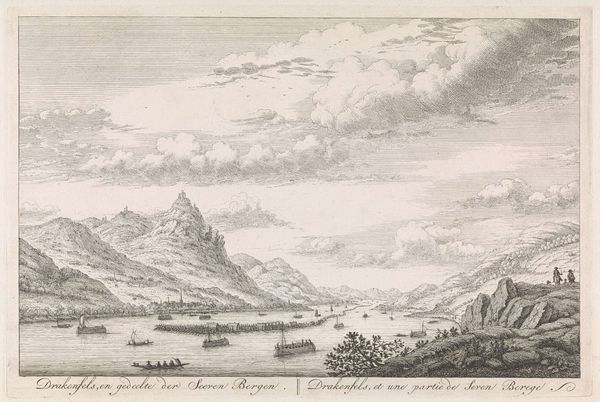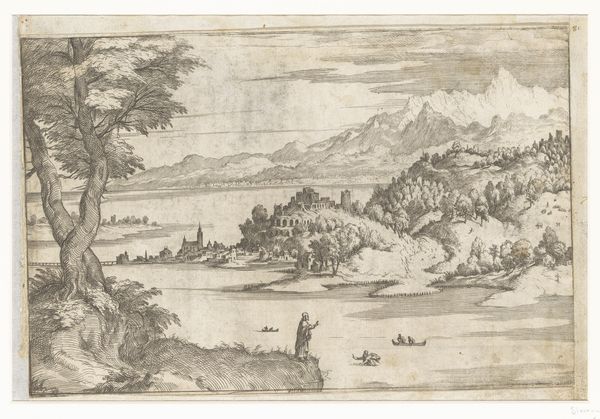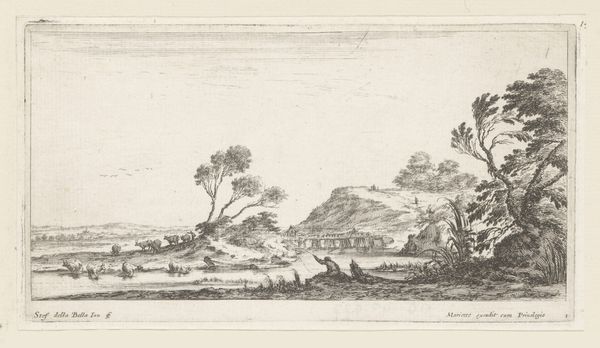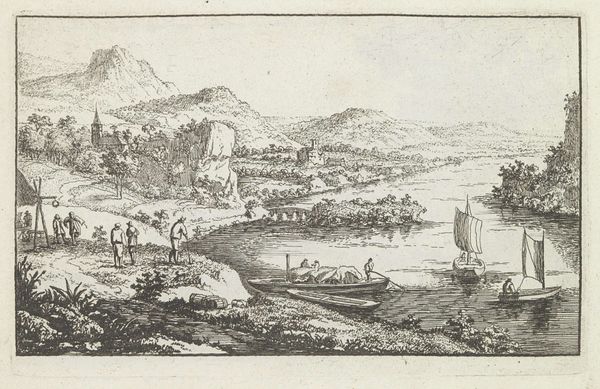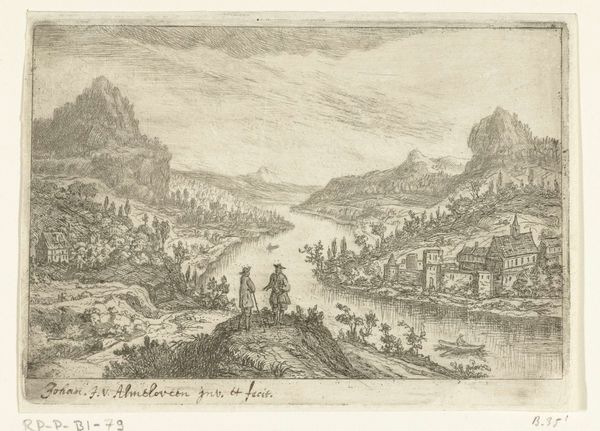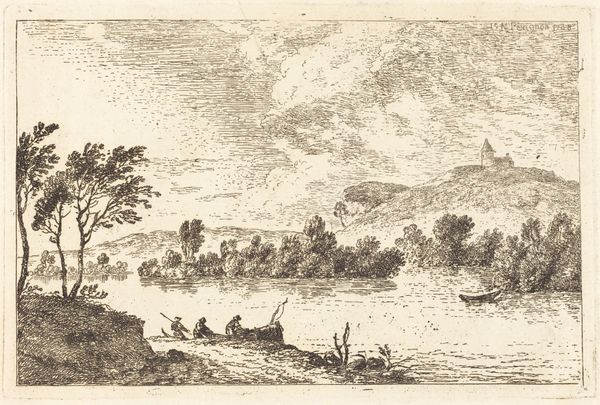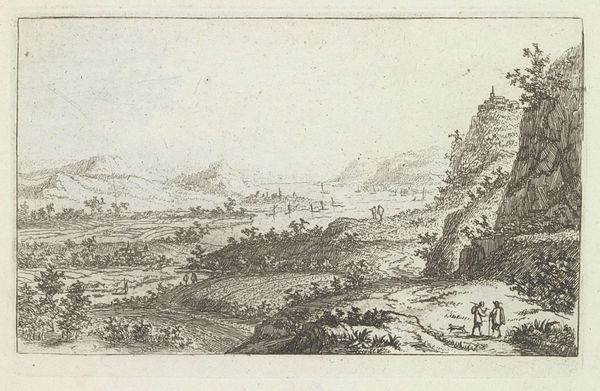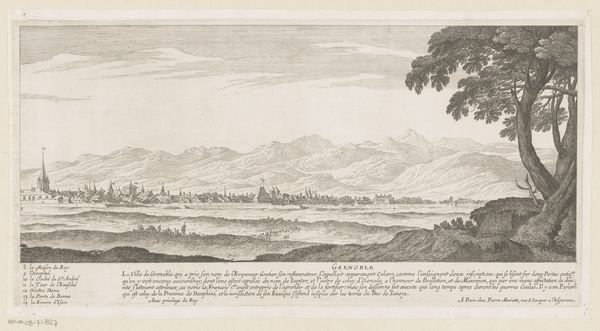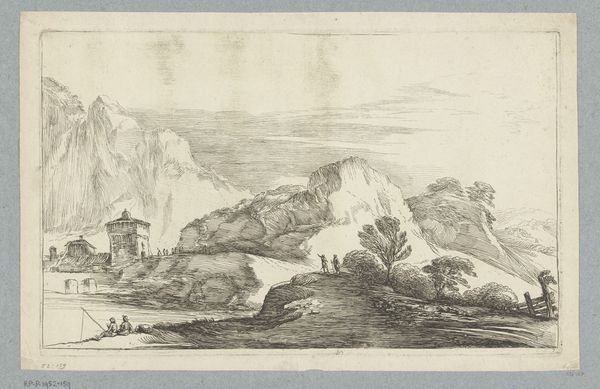
Landscape with mountains and a lake, figures in the foreground 1687
0:00
0:00
drawing, print, pencil
#
drawing
#
lake
# print
#
pen sketch
#
pencil sketch
#
landscape
#
figuration
#
mountain
#
pencil
#
northern-renaissance
#
realism
Dimensions: sheet: 6 1/8 x 9 7/8 in. (15.6 x 25.1 cm)
Copyright: Public Domain
Editor: This is Jan van der Meer the Younger's "Landscape with mountains and a lake, figures in the foreground," dating back to 1687. It's a pencil and pen drawing, and the delicacy of the line work gives the scene such an ethereal quality. What's your interpretation? Curator: Looking at this piece, I'm drawn to its historical context. Landscape art, particularly in the Northern Renaissance, served a function beyond mere depiction. It spoke to emerging national identities and the relationship between people and the land. Do you notice how the figures seem almost incidental to the grandeur of the scene? Editor: Yes, they are quite small in scale relative to the landscape, and seem like a part of it. Almost as though people were there just to give it the "realism" look. Curator: Exactly. Think about the patronage for works like this. Who was commissioning these landscapes? What were they meant to convey about the commissioner's position within the social order? Consider the symbolic weight of mountains, lakes, and even the depiction of labor in the foreground. The location of it, at the Metropolitan Museum of Art, makes it particularly unique too. Editor: So you are asking about the intention to place the normal people, the workers as they return to their houses after working during the daytime, with such beautiful art. Curator: Precisely. The seemingly 'realistic' presentation then, as you observed, might well carry a politically motivated intent. Editor: It is starting to seem very carefully curated. I mean created, but both, in a sense. I hadn't really considered the museum space in connection to that purpose before either. Thanks! Curator: It's the interplay between artistic representation, power dynamics, and the public role of art that makes historical analysis so compelling. Thank you!
Comments
No comments
Be the first to comment and join the conversation on the ultimate creative platform.
